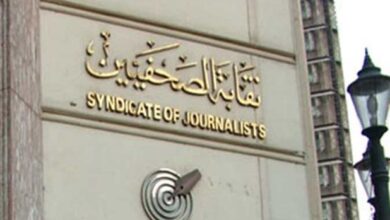There are two possibilities regarding the digitally-manipulated photo initially taken at the launch of the Middle East peace talks in Washington and later published in state-run daily Al-Ahram. In the photo, President Hosni Mubarak, who had trailed behind a procession that included Israeli Premier Benjamin Netanyahu, Palestinian Authority President Mahmoud Abbas and US President Barack Obama on the White House red carpet, was portrayed as having headed up the pageant.
There are two possibilities: either my dear friend Osama Sarraya, editor-in-chief of Al-Ahram, knew the picture was doctored, which would be a calamity; or he didn’t know, which would represent an even greater calamity.
It seems the character of the skillful photographer, as played by comedian Abd al-Salam al-Nabulsi in the movie A Day in My Life, has moved from the Akhbar Al-Youm Agency to Al-Ahram. And it would appear that this character has even more tricks up his sleeve–tricks that have now gotten so out of hand that they have, in reality, crossed the line into criminality.
If Sarraya was aware of the photo-doctoring that took place, I believe one of two things happened. He either became furious, punishing those involved in the scandal, or he covered for those responsible. In the latter case, he may have based his actions on a sense of nationalism. Or perhaps he only gave the green light for the president's relocation after giving a heads-up to someone in the government.
In any case, there is no doubt that a crime was committed. Not only a crime in terms of journalistic values, but, more importantly, a crime in the legal sense. It is a case of fraud and deception, which has not only damaged the reputation of the oldest media agency in Egypt and the Arab World, but has also embarrassed the president–and the country he leads–in front of the entire world.
Sarraya, therefore, has two choices: he can either take the issue seriously and apologize profusely, launching an investigation into the circumstances of the crime, or he can make light of it, and accuse us of "exaggeration" and "fishing for mistakes."
Last April, unfortunately, he took the latter course in regards to the newspaper’s front-page photo of former UN nuclear watchdog head Dr. Mohamed ElBaradei sitting next to US Ambassador Margaret Scobey during Easter celebrations at Cairo's St. Mark's Cathedral. In that case, an accompanying photo caption completely ignored ElBaradei’s presence and referred only to Scobey–as if the would-be presidential contender was of no relevance whatsoever.
A similar incident occurred in March 2006, during a trip by the president to Germany and Austria. For some reason, the editor-in-chief decided he didn’t have a minute to lose, so he published a photograph of President Mubarak with former German foreign minister Hans Dietrich Genscher, accompanied by a caption indicating that Mubarak had met with Austrian President Heinz Fischer.
Not only are these incidents indicative of a decline in journalistic professionalism and a lack of respect towards those involved in the events in question–not to mention the readers–but it also signifies a serious denial of reality, which can only lead to new tricks and, in turn, more international ridicule. After all, you can deny that someone exists, but that won't obliterate his or her existence; you can alter the truth on paper, but that won’t change reality.
Since the information I have leads me to believe that Sarraya had been unaware of the photo-doctoring beforehand, I would like to call on President Mubarak to charge the guilty parties, including Sarraya, with defamation, since, as editor-in-chief, Sarraya should have been aware of what was going on. Otherwise, we may soon find Al-Ahram digitally altering new pictures portraying the president leading the Arab armies to liberate Jerusalem.
The tragicomic news of the doctored photo has spread like wildfire. Unfortunately, long after Al-Ahram’s role in the affair has been forgotten, Egypt will remain the butt of the joke.
Translated from the Arabic Edition.




